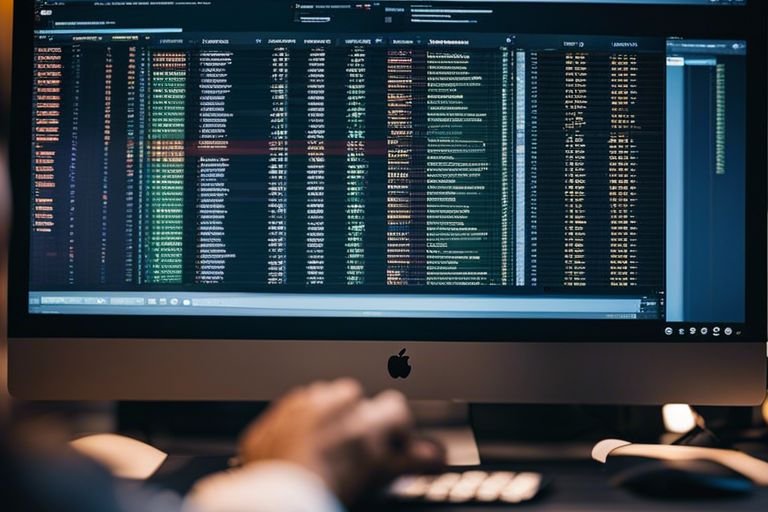There’s a growing trend in the software development world known as DevOps Extreme Programming, a methodology that combines the efficiency of DevOps with the rigor of Extreme Programming. This streamlined approach to software development increases collaboration between development and operations teams, enhances the quality of code through continuous integration and deployment, and reduces the time it takes to deliver new features to users. By following the principles of DevOps Extreme Programming, teams can improve productivity and deliver value to customers faster than ever before.
Key Takeaways:
- DevOps Extreme Programming (XP) is a methodology that combines software development practices with operations to streamline the software development process.
- DevOps XP emphasizes continuous integration and deployment, enabling teams to deliver high-quality software more frequently and efficiently.
- DevOps XP helps teams to adapt to changing requirements quickly by promoting collaboration, feedback, and a customer-centric approach throughout the software development lifecycle.
Defining DevOps and Extreme Programming
For this chapter, let’s explore into the definitions of DevOps and Extreme Programming. These two methodologies play a crucial role in streamlining software development processes, ensuring faster delivery and higher-quality outcomes. Let’s break down each concept to better understand their significance in modern software development.
- What is DevOps?
- What is Extreme Programming?
What is DevOps?
One important aspect of DevOps is the automation of software delivery and infrastructure changes. This is achieved through practices like continuous integration, continuous delivery, and automated testing. By automating these processes, development teams can release software more frequently and with higher confidence in its quality.
- Automation of software delivery
- Continuous integration
- Continuous delivery
- Automated testing
What is Extreme Programming?
Programming in Extreme Programming involves various practices such as pair programming, test-driven development, continuous integration, and frequent releases. These practices ensure that the code is of high quality, well-tested, and easy to maintain. Pair programming, for example, allows two programmers to work on the same code simultaneously, leading to fewer bugs and better design decisions.
- Pair programming
- Test-driven development
- Continuous integration
- Frequent releases
DevOps focuses on collaboration and communication between development and operations teams, leading to faster delivery and more reliable software. By breaking down silos and automating processes, DevOps enables organizations to respond to market changes quickly and efficiently. However, as with any methodology, the incorrect implementation of DevOps practices can lead to increased risk of errors and security vulnerabilities if not carefully managed.
Extreme Programming emphasizes improving software quality through constant feedback, frequent releases, and close collaboration between team members. This approach helps teams adapt to changing requirements and deliver valuable software to customers faster. While Extreme Programming offers numerous benefits, such as improved code quality and customer satisfaction, it requires a high level of discipline and commitment from team members to be successful in the long run.

The Challenges of Traditional Software Development
Little did we know that the traditional methods of software development would soon face significant challenges in keeping up with the rapidly evolving technological landscape. One of the primary issues with conventional software development practices, such as the Waterfall methodology, is the lack of flexibility and agility to adapt to changing requirements and market dynamics.
Development:
- Requirements gathering phase can take several weeks or months before any coding begins.
- Changes in requirements late in the development cycle can lead to extensive rework and delays.
Inefficiencies in Waterfall Methodology
With the Waterfall methodology, the sequential nature of the development process often leads to inefficiencies. The rigid structure of Waterfall, where each phase must be completed before the next begins, can result in bottlenecks and hinder progress. This lack of flexibility can be detrimental when unexpected issues arise or when requirements change mid-project, causing delays and increased costs.
Inefficiencies:
- Sequential nature can lead to long lead times between project initiation and delivery.
- Limited room for error or changes once a phase is completed.
The Need for Agility and Flexibility
Flexibility and agility have become paramount in software development to keep pace with the dynamic requirements of modern business environments. The ability to adapt quickly to changing conditions, customer feedback, and market trends can make the difference between a successful product and a failed one. Agile methodologies, such as Extreme Programming (XP) in DevOps, provide the framework for iterative development, continuous feedback, and rapid adaptation, fostering collaboration and innovation.
Flexibility:
- Agile methodologies allow for incremental development and regular feedback loops.
- Teams can adjust priorities and features based on changing requirements or business needs.
Software development today demands a more adaptive approach that can respond to changing needs and market conditions swiftly. By embracing Agile practices like DevOps Extreme Programming, teams can streamline their processes, enhance collaboration, and deliver high-quality software products efficiently.
How DevOps Extreme Programming Addresses These Challenges
Many challenges in software development can be addressed by implementing DevOps Extreme Programming practices. By combining DevOps principles with Extreme Programming techniques, teams can streamline their development processes, improve collaboration, and deliver high-quality software consistently.
Continuous Integration and Delivery
Continuous integration and delivery are key components of DevOps Extreme Programming that help teams automate the process of building, testing, and deploying code changes. By integrating code frequently and delivering software in small increments, teams can quickly identify and fix issues, leading to a more stable codebase and faster time to market. Below are some practices that help achieve this:
- Automated build processes
- Automated testing suites
- Deployment pipelines
Automated Testing and Feedback Loops
Continuous testing and feedback loops are vital in DevOps Extreme Programming to ensure that software meets quality standards and user requirements. By automating tests at every stage of the development process, teams can catch bugs early, prevent regressions, and receive immediate feedback on code changes. Some techniques to implement automated testing and feedback loops include:
- Unit testing
- Integration testing
- Acceptance testing
Addresses
Automated testing and feedback loops in DevOps Extreme Programming play a crucial role in maintaining code quality and accelerating the development lifecycle. By automating tests and continuously providing feedback, teams can iterate quickly, identify issues early, and deliver software with confidence.
Understanding the importance of continuous integration, delivery, automated testing, and feedback loops in DevOps Extreme Programming is vital for modern software development teams. Embracing these practices not only helps streamline the development process but also enhances collaboration, efficiency, and overall product quality. Teams that prioritize these practices are more likely to succeed in delivering value to their customers consistently.

The Role of Collaboration in DevOps Extreme Programming
Your software development process can greatly benefit from a collaborative approach in DevOps Extreme Programming. Collaboration plays a crucial role in achieving the objectives of streamlined software development, faster delivery, and improved quality. By fostering collaboration among team members, you can enhance communication, knowledge sharing, and problem-solving capabilities within the development cycle.
Cross-Functional Teams and Communication
One key aspect of collaboration in DevOps Extreme Programming is the formation of cross-functional teams. These teams comprise members with diverse skill sets, such as developers, testers, and operations personnel, who work together towards a common goal. By promoting regular communication and collaboration among team members, your organization can break down silos and encourage the sharing of ideas and feedback. This leads to a more efficient development process, where issues are identified and addressed promptly.
Prompt:
- Discuss the benefits of cross-functional teams in DevOps Extreme Programming.
- Explain how communication within cross-functional teams aids in streamlining software development.
Shared Responsibility and Collective Ownership
The principles of shared responsibility and collective ownership in DevOps Extreme Programming emphasize that every team member is accountable for the overall success of the project. Instead of working in isolation, team members collaborate closely, share knowledge, and help each other to achieve common goals. This shared responsibility ensures that no single team member is solely responsible for a particular task, mitigating risks and bottlenecks in the development process.
Prompt:
- Explain how shared responsibility and collective ownership contribute to the efficiency of software development.
- Discuss the impact of shared responsibility on team dynamics and project outcomes.
The shared responsibility and collective ownership principles are vital in fostering a culture of accountability and teamwork within DevOps Extreme Programming teams. By distributing responsibilities across team members and promoting a sense of ownership for the project as a whole, organizations can improve collaboration, increase efficiency, and deliver high-quality software consistently.
Prompt:
- Elaborate on the importance of promoting a culture of shared responsibility in DevOps Extreme Programming.
- Discuss how collective ownership impacts the development of innovative and reliable software products.
Role of collaboration in DevOps Extreme Programming is pivotal as it promotes teamwork, transparency, and accountability among team members. By embracing shared responsibility and fostering cross-functional communication, organizations can streamline their software development processes, accelerate delivery, and enhance the quality of their products. Collaborative efforts within DevOps Extreme Programming not only facilitate efficient development but also cultivate a culture of continuous improvement and innovation.
Key Practices of DevOps Extreme Programming
Unlike traditional software development methodologies, DevOps Extreme Programming (XP) emphasizes a set of key practices that promote collaboration, efficiency, and quality in the software development process. These practices aim to streamline development workflows, reduce bottlenecks, and improve overall team productivity. Let’s examine into some of the necessary practices of DevOps Extreme Programming.
Pair Programming and Code Review
Review checklist for Pair Programming and Code Review:
- Clarify goals
- Switch roles regularly
- Discuss design decisions
- Provide constructive feedback
Pair Programming and Code Review are fundamental practices in DevOps Extreme Programming that foster collaboration and knowledge sharing among team members. By working in pairs, developers can brainstorm solutions, catch errors early on, and ensure high-quality code through peer review.
DevOps: A Guide to Streamlining Software Development …
Refactoring and Technical Debt Management
Pair Programming and Code Review samples for Refactoring and Technical Debt Management:
- Identify code smells
- Break down complex functions
- Write unit tests
- Monitor code complexity metrics
Pair Programming helps in identifying areas of code that need refactoring to improve readability, maintainability, and performance. By continuously refactoring code and managing technical debt, teams can prevent future issues and ensure the scalability and longevity of the software.
Pair Programming and Code Review in DevOps Extreme Programming are crucial for maintaining code quality and fostering collaboration among team members.
Continuous Learning and Improvement
Debt checklist for Continuous Learning and Improvement:
- Attend conferences and workshops
- Engage in peer programming
- Experiment with new tools and technologies
- Share knowledge with the team
Another necessary practice in DevOps Extreme Programming is Continuous Learning and Improvement. By encouraging team members to stay updated on industry trends, learn new skills, and share knowledge, organizations can foster a culture of innovation and adaptability, leading to continuous improvement in software development processes.
Continuous Learning and Improvement in DevOps Extreme Programming is key to staying competitive, fostering innovation, and driving growth within the organization.
Benefits of DevOps Extreme Programming
All software development teams can benefit from implementing DevOps Extreme Programming practices. These methodologies offer a range of advantages that can streamline the development process, improve overall quality, and increase team efficiency. Let’s explore some of the key benefits below:
Faster Time-to-Market and Improved Quality
One of the primary benefits of DevOps Extreme Programming is the ability to accelerate the time-to-market for software products while maintaining high quality standards. By implementing continuous integration, continuous delivery, and automated testing practices, teams can ensure that code changes are quickly integrated, tested, and deployed, reducing the time it takes to release new features or updates. This results in faster feedback loops, allowing teams to respond to issues more rapidly and deliver a more reliable product to users.
// Example of continuous integration configuration
pipeline {
agent any
stages {
stage('Build') {
steps {
// Build steps here
}
}
stage('Test') {
steps {
// Test steps here
}
}
stage('Deploy') {
steps {
// Deployment steps here
}
}
}
}
Increased Efficiency and Reduced Costs
One significant advantage of DevOps Extreme Programming is the increased efficiency and reduced costs associated with streamlined development processes. By automating repetitive tasks, such as testing, deployment, and infrastructure provisioning, teams can eliminate manual errors and save time. This automation also leads to cost savings by reducing the need for manual intervention and allowing team members to focus on more strategic tasks. Additionally, the iterative nature of Extreme Programming ensures that feedback is incorporated early and often, reducing the risk of costly rework later in the development lifecycle.
// Example of automated testing script
function runTests() {
// Test execution code here
}
DevOps Extreme Programming can significantly boost team efficiency by streamlining processes and reducing manual errors, ultimately leading to cost savings and improved productivity.
Enhanced Collaboration and Team Morale
Faster communication and better coordination among team members are vital for successful software development projects. DevOps Extreme Programming promotes enhanced collaboration by emphasizing close collaboration between developers, testers, and operations teams throughout the development lifecycle. By encouraging frequent communication, pair programming, and continuous feedback loops, teams can work together more effectively, leading to increased productivity and higher team morale.
// Example of pair programming session
function pairProgrammingSession() {
// Pair programming code here
}
Improved collaboration and team morale are crucial for maintaining a positive work environment and ensuring the success of software development projects. By fostering a culture of teamwork and communication, DevOps Extreme Programming can help teams overcome challenges and achieve their goals more effectively.
Final Words
Taking this into account, it is evident that utilizing DevOps Extreme Programming can greatly streamline software development processes. By combining the principles of DevOps with the practices of Extreme Programming, teams can enhance collaboration, improve communication, and increase efficiency throughout the development lifecycle. This approach not only accelerates the delivery of high-quality software but also fosters a culture of continuous improvement and innovation within organizations.
FAQ
Q: What is DevOps Extreme Programming?
A: DevOps Extreme Programming (XP) is an agile software development methodology that combines the principles of DevOps and Extreme Programming to streamline the software development process.
Q: How does DevOps Extreme Programming streamline software development?
A: DevOps Extreme Programming streamlines software development by emphasizing collaboration, communication, automation, and continuous feedback among developers, operations teams, and other stakeholders.
Q: What are the key benefits of using DevOps Extreme Programming?
A: Some key benefits of using DevOps Extreme Programming include faster time-to-market, higher quality software releases, better alignment between development and operations teams, and improved overall efficiency in the software development process.







